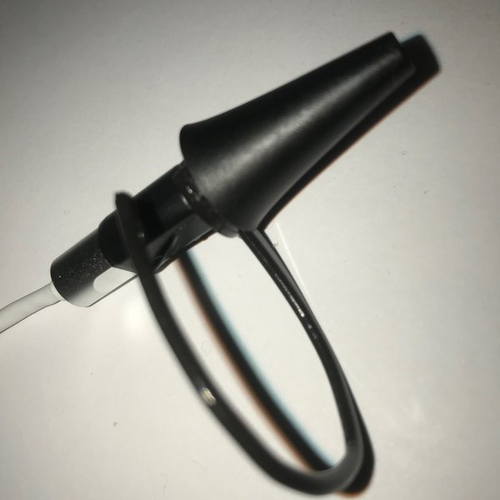Earswitch
Ear switch as an assistive communication and control device / gaming switch and HCI\n\nIn this hack I have used a USB otoscope camera to detect voluntary movement of a middle ear muscle (tensor tympani), to control assistive technology software (Grid3), the Microsoft On-Screen Keyboard , and as an \“left-click\” selection as an adjunct for eViacam head- tracking software. \n\n75% of people recognise that they can contract their tensor tympani (a rumbling sound or muffling of the hearing eg when yawning/ tightly closing eyes etc). 17% could generate the contraction in isolation to other movements. \n\nI have shown with a USB auroscope from Amazon that this causes movement of the eardrum, and I have detected this movement with iSpy motion detection software and successfully used it to control (handsfree); asssistive software (Grid3), the On-Screen Keyboard and to function as a \“left click\” for head tracking. \n\nI hope this can help people to communicate
This is to allow communication for people with severe communication disabilities, and can help with control of other assistive technologies. I developed this as an assistive switch but also could be used as an accessory games controller switch (if both hands are already fully occupied!), and any other user interface. It’s likely to work as a general new Human Computer Interface and may even be able to control smart earphones/ connected smart phones and hearing aids if the idea is incorporated into general consumer electronics.
I attach a background giving more details of the tensor tympani and the reasoning for the project, Proof of Concept videos, and instructions on how to set up the prototype, but would value any help/ advice. Link to the prevalence survey is; https://www.surveymonkey.com/results/SM-PQ559JZW7
It would be great to help people communicate - so please let me know if you have any success in setting this up and using it.
I think the next step for a more useable prototype (mk 2) would be incorporation of a CMOS camera module into an ear-shell of a noise cancelling earphone (similar to those that performers wear on stage), as these anchor the earphone in the ear , with the wire running over & behind the ear.
I’d be grateful of any help or advice on the best way to do this.
I am hoping that if we can prove that the Earswitch can help people communicate , or it’s taken up as a popular games controller switch, that the tech companies will take this up and develop a mass produced/ wireless miniaturised version so that people with assistive needs can benefit from the function in cheap off-the-shelf earswitches.
I have patent pending for the earswitch in view of the potential for general consumer use, but am hopeful that the current hack can help people communicate now ( as I’ve been able to type with the earswitch and its a shame that others dont have the opportunity to use this now!)
I guess my current questions and need for advice / guidance are:
1) how to set up the next earphone type prototype: what CMOS camera/ how to mount it and connect
2) are there any small enough IR camera sensors (that would avoid need for light source)?
3) which games would the accessory earswitch be useful as a games controller? And which ones would be most useful to demonstrate this?
4) are there any other programs/ applications for the earswitch that you could develop/ suggest etc ?
5) any other advice?
6) can you replicate this? & have you helped people communicate with this?
Thanks for your help
Nick
 Open Assistive
Open Assistive
